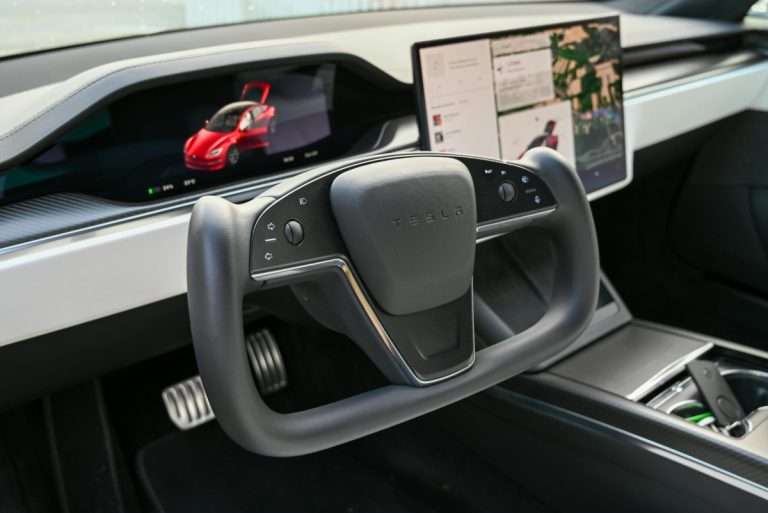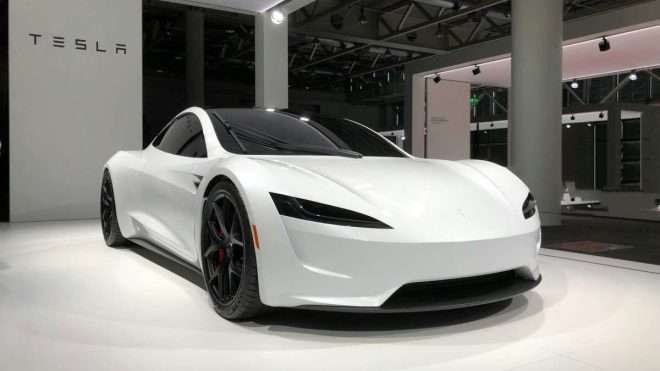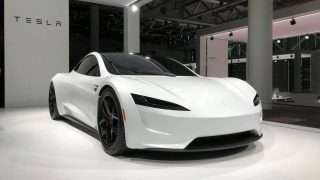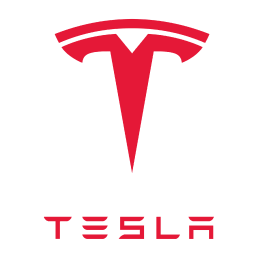Tesla, Inc., a name synonymous with electric vehicles, (EVs), innovation, and sustainable energy, has transformed the automotive industry and become a leader in electric vehicles (EVs). Founded in 2003 by engineers Martin Eberhard and Marc Tarpenning, Tesla’s mission was to accelerate the transition to sustainable energy. The company later gained global attention when entrepreneur Elon Musk joined as chairman in 2004, bringing his vision, resources, and leadership to the forefront.
Musk’s goal for Tesla was clear: to create electric vehicles that are not only environmentally friendly but also fast, stylish, and desirable. What began as a bold idea has since blossomed into a global force, reshaping the way we think about transportation.
Tesla started with its debut model, the Roadster, in 2008, which proved that electric cars could be high-performance machines. The Roadster could go from 0 to 60 mph in under 4 seconds and had a range of about 245 miles on a single charge—an unprecedented feat for an electric vehicle at the time. Building on this success, Tesla introduced the Model S in 2012, a luxury sedan that redefined the EV market with its cutting-edge technology and sleek design. The Model X SUV followed in 2015, offering a blend of luxury, performance, and practicality. In 2017, Tesla brought the Model 3 to market, a more affordable option aimed at mass-market consumers, making electric vehicles accessible to a wider audience. The Model Y, a compact SUV, was launched in 2020, further expanding Tesla’s lineup.

As of 2023, Tesla has grown into a multi-billion-dollar company with a market capitalization surpassing $850 billion. Its rise to prominence has been meteoric, positioning Tesla as one of the most valuable automakers in the world, even surpassing the combined market value of traditional giants like Toyota and Volkswagen. The company continues to dominate the EV space, delivering over 1.3 million vehicles globally in 2022, with aims to increase this number as production capabilities grow. Tesla’s Gigafactories, located in the United States, China, and Germany, play a key role in scaling up production, pushing the company closer to its goal of mass EV adoption worldwide.
Tesla offers a range of vehicles to suit various customer preferences and price points. The Model 3, its most affordable model, starts at around $40,000, making it competitive with traditional gasoline-powered cars. The Model Y starts around $50,000, offering a more spacious SUV option. For those seeking more luxury and performance, the Model S starts at approximately $85,000, while the Model X SUV starts at around $95,000. Tesla’s most high-end models, like the Model S Plaid, can exceed $130,000, delivering top-tier performance with a 0 to 60 mph acceleration of just under 2 seconds. Additionally, Tesla has teased the arrival of its highly anticipated Cybertruck 2024, expected to start at around $79,990, and its Semi truck for commercial use, marking its foray into electric trucking.
Statistics highlight Tesla’s ever-growing dominance in the EV market. In the U.S. alone, Tesla holds over 65% of the electric vehicle market share as of 2022. Globally, Tesla’s vehicles accounted for more than 20% of all EVs sold, making it the top-selling electric car company worldwide. The Model 3 remains the world’s best-selling EV, while the Model Y continues to gain popularity due to its practicality and range. Tesla’s innovations extend beyond automobiles; the company has made significant strides in energy storage with its Powerwall and Solar Roof products, aiming to revolutionize energy consumption at home

From its humble beginnings as a startup with ambitious goals to its current status as a global automotive and energy leader, Tesla has paved the way for the future of transportation. Through innovation, cutting-edge technology, and an unwavering commitment to sustainability, Tesla continues to push the boundaries of what’s possible in the world of electric vehicles and beyond. With ambitious projects on the horizon, including fully self-driving technology and further expansion into renewable energy, Tesla is well-positioned to lead the charge in transforming the world’s energy and transportation landscapes.
But with my husband often forgetting to tank our car, I still can’t imagine myself and the kids in the middle of nowhere in an emptied battery electric car!
Start the conversation by leaving a comment or registering. Join Jestafreak today, complete Your Lifestyle Profile, and unlock your full consumer potential! Discover a world of brands and seize opportunities to make your voice heard.
Visit Jestafreak.com to explore in-depth insights into consumer behavior, brand histories, and much more.
Engage directly with our community in the Jester’s Court, or amplify your influence by becoming an Angel Customer by completing your private personal lifestyle profile.
Sources:
a) Tesla’s Official Website (for details on vehicles and company background):
tesla.com
b) Tesla Investor Relations (for financial statistics and market value):
tesla.com
c) Automotive News and Industry Reports from sources like Bloomberg, Reuters, and Automotive News (for current market share and sales figures).
d) EV Market Data Platforms such as EV-Volumes and Statista (for electric vehicle statistics and market share insights).
e) Gigafactory and Production Information through Tesla’s investor updates and manufacturing reports.













